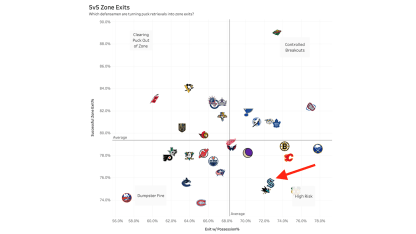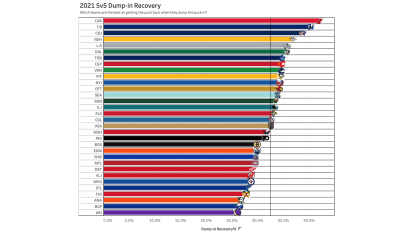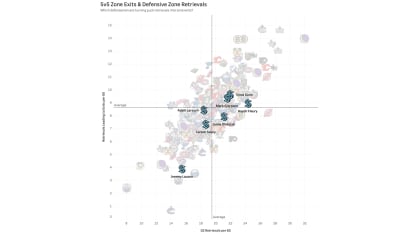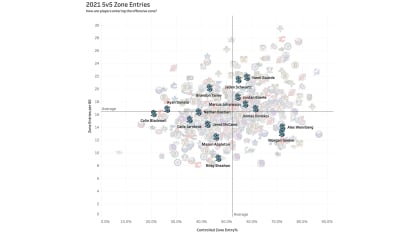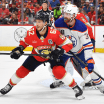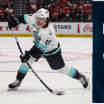And again, for perspective, these rankings are not judgements. Carolina, who ranks first in Sznajder's work in dump-in recoveries also has the lowest percentage of controlled zone entries this season.
Is transitional play struggling?
Now we know, broadly, how the Kraken like to move the puck. Has something been off these past few games?
Thanks to Sportlogiq, we have data on Seattle's success rate for controlled exits and entries (all situations) for every game the team has played this year. For this team, the season average for controlled exit success is 81.32-percent. Six of the last seven games have been below this number, and while Tuesday's 74.36% was in the bottom four for the 2021-22 campaign, drops well below average have been much more sporadic, with the most recent coming Feb. 11 in Anaheim (74.63%) - a game Seattle won!
As for entries, the season average for success rate is 58.81-percent. It is true that other than the Vancouver game on Monday (63.04%) the last four games have been below that coming in between 43 and 44 percent success rate. The 43.14-percent success rate the Kraken had Tuesday was the lowest of the year. But, before this recent stretch, the prior 14 games were all at or above team averages for the season.
So, yes, there has been a stretch of transition play being lower than the standard this group has established this year. Now it's up to this group to find their way back.
Who can step up and help?
As is often the case when you're looking to re-establish something, you look to those proven to perform. Let's look at which Kraken defenders have the best results getting to loose pucks and turning them into exits out of the work zone.
Haydn Fleury has been in the lineup 12 of the last 14 games and he along with Mark Giordano and Vince Dunn lead the way in terms of not just getting to loose pucks, but sending them up ice successfully. Remember, this can also tie to the responsibilities of each D partner and highlights an ability, not a judgement.

